There are technically only two types of five dollar bills printed with a series date in the 1900s (1900 – 1909). Those two types of bills are the 1907 legal tender wood chopper and the series of 1902 blue and red seal national bank notes. However, based on the way some national bank notes were printed, there are actually about five different types of five dollar bills that were physically being printed during the 1900s.
The most common five dollar bill from the time period is the Series of 1907 wood chopper legal tender note. It has a picture of Andrew Jackson and a pioneer with his family. These can bought for around $100 in average condition. The seal and serial numbers are always red. The design is mostly borrowed from earlier five dollar legal tender notes.
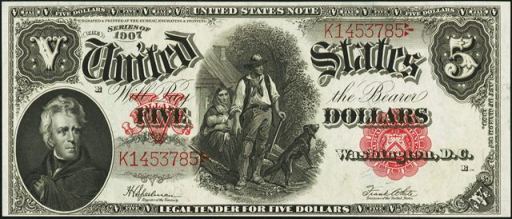
There were four different national bank notes printed during the first decade of the 1900s and all of them could have the following years printed on them: 1900, 1901, 1902, 1903, 1904, 1905, 1906, 1907, 1908, or 1909. The ones that say 1900 or 1901 will be from the series of 1882. They can have brown seals or blue seals as pictured below. Both types feature a portrait of James Garfield. I don’t want to get too technical here, so just ask us if you have further questions about when something was actually printed. Values range from a couple hundred dollars to thousands of dollars.
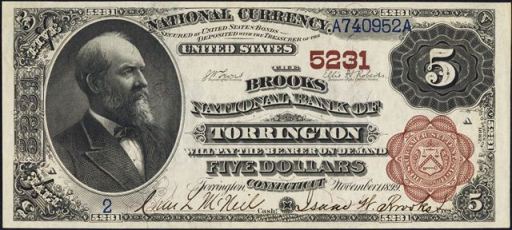
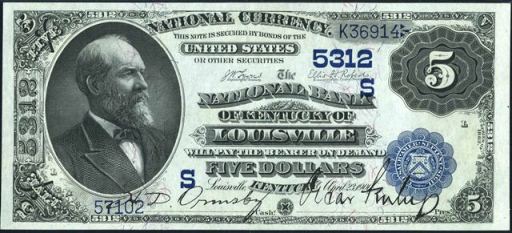
Series of 1902 $5 bills can be very rare. The exact value all just be based on the condition, serial number, and bank of issue. Ben Harrison is featured on each bill. Prices range from less than $100 to more than $10,000 for the rarest examples. There are two different types of series of 1902 bills, the earlier type has a red seal. Red seals were only printed between 1902 and 1908. So they will say series of 1902, and will always have a charter date within that six year period. Blue seals were printed from 1908 until 1929. All five dollar blue seals say Series of 1902, but none were printed in that year. Blue seal $5 bills tend to be more common, but there are always exceptions.
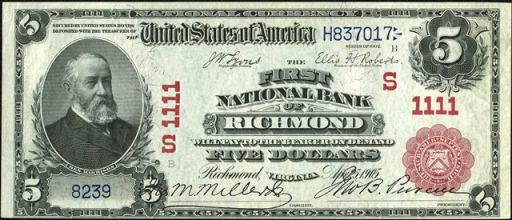
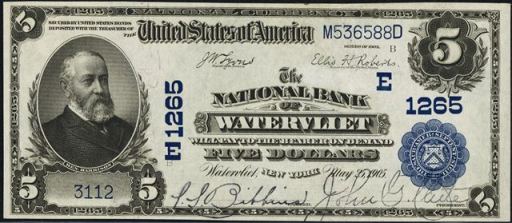
We understand that five dollar bill issues from the 1900s can be a bit of a confusing topic for the novice. Please contact us if you need help with your note. We are interested buyers and can tell you exactly what it is worth. Sales@AntiqueMoney.com


